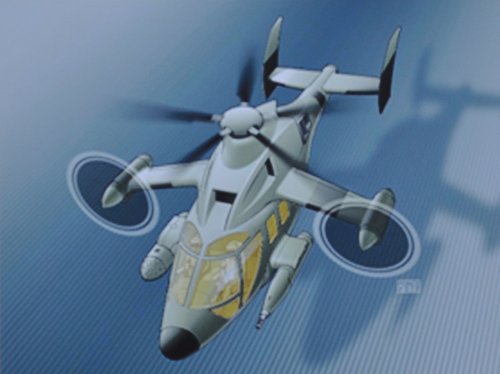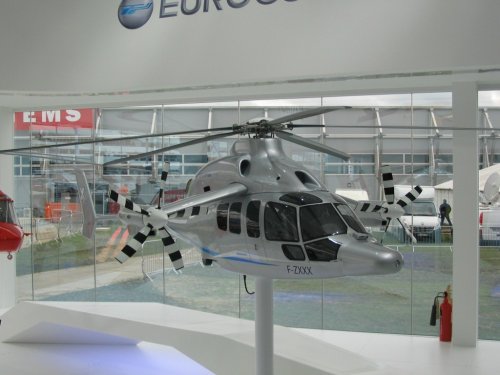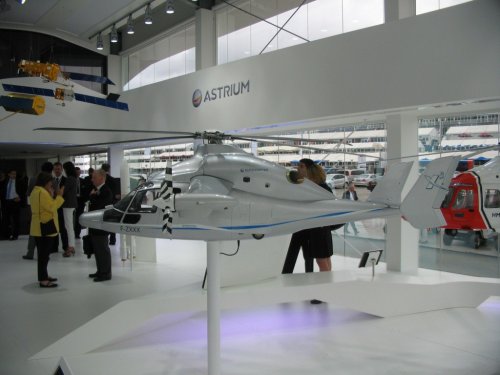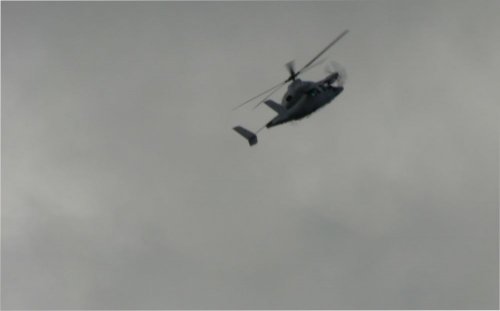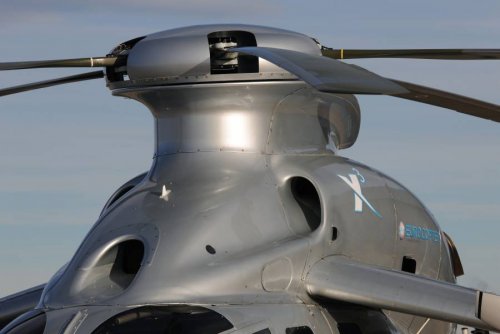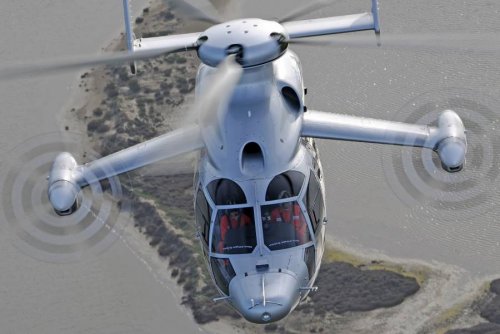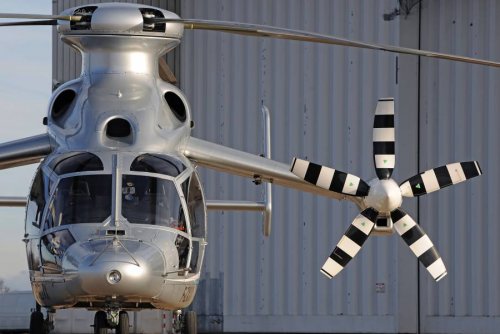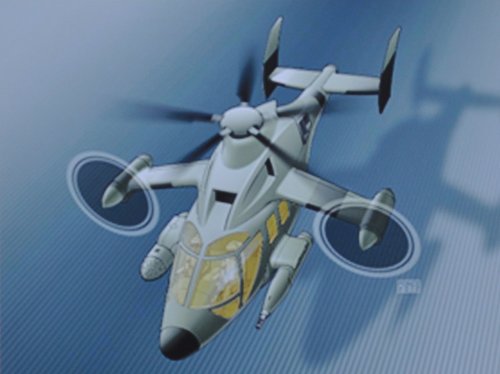The day began with a technical briefing by Jean-Jacques Ferrier and Paul Eglin, two of the X3’s senior engineers. “It is quite simple,” Ferrier explained. “We slow down the main rotor at high speed to reduce Mach at [the blade tip]. Then we have a wing which develops additional lift to unload the main rotor at high speed and to compensate for retreating blade stall.” Because the rotor has zero pitch at high speed to reduce drag, Ferrier said that an X3 pilot does not tilt the rotor disk to achieve forward flight. Thrust is provided entirely by the two, five-bladed, constant-speed propellers, which receive power from a pair of Rolls-Royce-Turbomeca RTM322s conventionally mounted atop the fuselage. The turboshaft engines and props are coupled to the same transmission that drives the X3’s five-bladed main rotor system.
The propellers also provide anti-torque services through differential thrust. And to keep it simple for pilots, the pedals control the anti-torque thrust the same as they would in a conventional helicopter.
The wings on the X3 play a key role in its performance. The added lift they produce minimizes the need for lift from the main rotor. Consequently, once 60 kts has been achieved, the collective is lowered. However, this does not cause the main rotor to enter an autorotative state. It merely reduces its RPMs to a point where drag is minimized.
“Fin flaps are used in cruise flight to counteract the main rotor torque,” Eglin said. “Of course, we have less power on the main rotor, so a very small setting is sufficient.” Wing and horizontal stabilizer flaps are used to pitch the aircraft, not the rotor disk. “It is very easy to fly,” boasted Ferrier.

